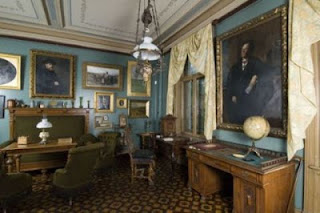 No female choice back then. When Ibsen wrote his plays the only legitimate role for Norwegian women was to be married ladies. And women had no power to decide whom to marry. (In the case of Ibsen's mother, her parents married her to Mr. Disaster!). So women who wanted something else were in trouble: Want to be a female artist? Forget it! Dream of being an actress? Scandalous! Wanting to be a vocal female writer? How dare she!
No female choice back then. When Ibsen wrote his plays the only legitimate role for Norwegian women was to be married ladies. And women had no power to decide whom to marry. (In the case of Ibsen's mother, her parents married her to Mr. Disaster!). So women who wanted something else were in trouble: Want to be a female artist? Forget it! Dream of being an actress? Scandalous! Wanting to be a vocal female writer? How dare she!
No wonder the man took his plays to other countries and lived away from Norway for 27 years... And he chose a progressive wife, Suzannah, who understood his quest and stood by him.
I very much enjoyed learning stories of individuals who persevere in adversity and finally make it in their lifetimes. Sadly for my own country, two of our best writers died outside Costa Rica (Yolanda O. and Eunice O.) and it was only after they were dead (and no longer a threat) that the country embraced their writing and celebrated their talent.
The Oslo establishment changed its mind about Ibsen in time for him to live his final 11 years in Norway (1895-1906). He was lucky to have felt his country's appreciation before he died.
 |
| His studio upstairs. He wrote his last two plays here. |
 |
| The exhibition downstairs. |
Given my Ibsen readings, I had to visit the Ibsen museum.
What a treat (and in great company: my mother!). We visited both his flat and the exhibition (with countless stories and personal belongings). The history of how they found them is here.
 |
| Some of his watches. |

